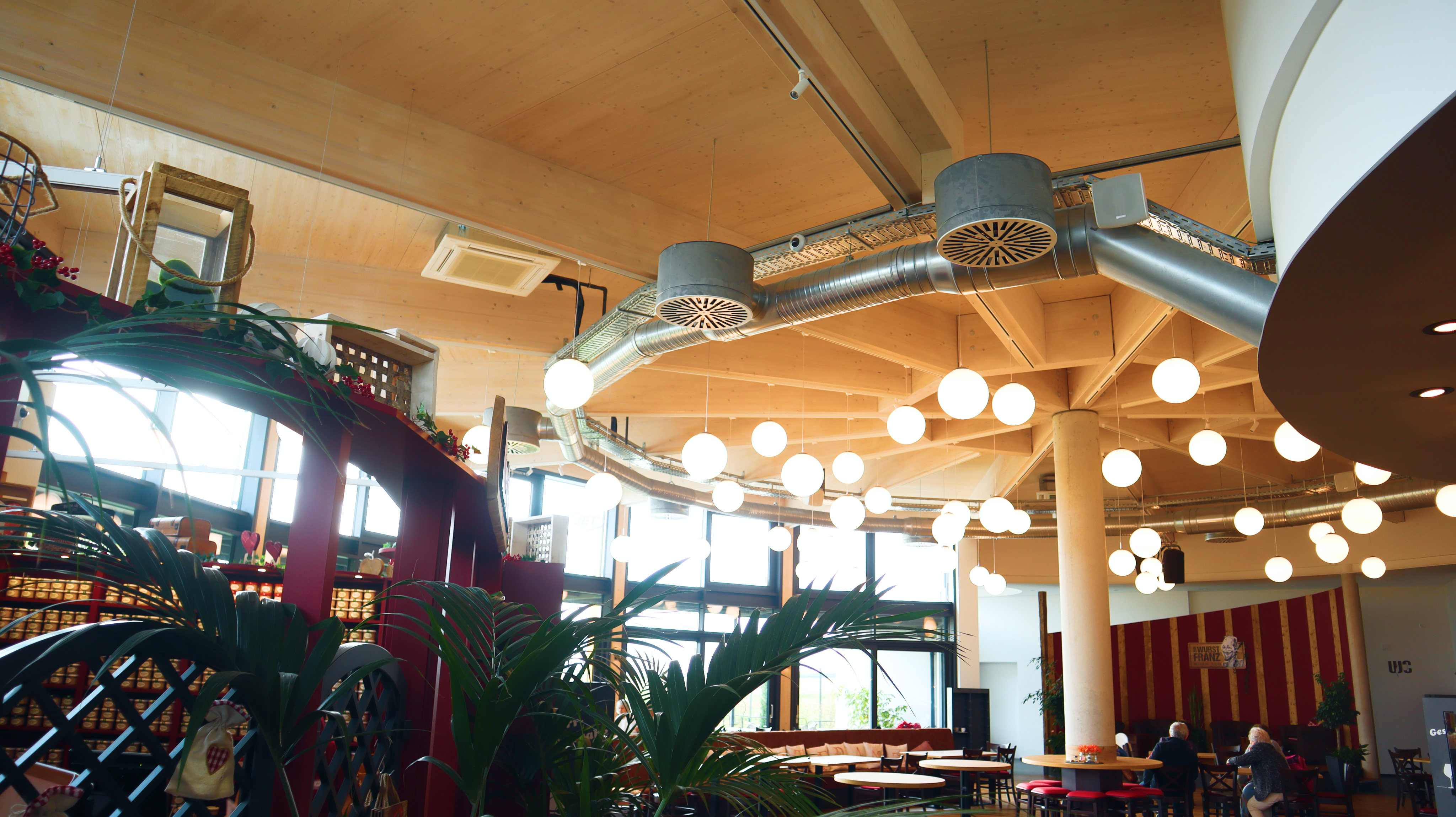Weinbuch Butcher's Shop
Öpfingen. Deutschland
2021
Light Commercial, Control, Air to Air Heat Pump, Refrigeration, VRF, Shops, Restaurants, nanoe™ X
Outdoor units:
Indoor units: 5.6 kW ceiling cassettes
Control: CZ-256ESMC3 touch controller
Challenge
Solutions & Tech Applied
There were many opportunities for innovative solutions:
1. Constructing the CO2 system with waste heat recovery to be integrated into the underfloor heating. To make this possible, it was necessary to splice into the refrigerant circuit of the outdoor unit and make modifications. The effect of this was to redirect the heat flow away from the condenser and exterior air and toward the buffer tank via an external plate heat exchanger.
2. Use of natural coolants in the cooling plants. CO2 was chosen as the coolant in order to meet sustainability, cost savings and environmental conservation requirements.
3. A hydromodule for heat recovery was planned as part of the 3-pipe system. This ensures that the heat flow is not directed to the outdoor air via the condenser but is instead directed to the buffer tank.
4. We used suction stations wherever KM R410a was employed.
5. Intuitive energy expense reporting as part of the central Panasonic equipment.
Customer expectations were fulfilled, and in some areas even exceeded, thanks to Panasonic's state-of-the-art system solution. The perfectly adjusted room temperature from the ceiling cassette units mounted at a height of 7 metres make customers feel right at home. The waste heat recovery in the CO2 and 3-pipe systems continuously charges the heat buffer tank, thus saving valuable energy and reducing operating costs. Using the environmentally-friendly coolant CO2 in the cooling plants protects our climate. All of the advantages are characterized by a solid price-to-performance ratio from Panasonic. In addition, the system's good SCOP and SEER values speak for themselves in distinguishing the system from the competition. Because the customer's previous compressor contained about 80 kg of coolant and the compressor was always leaking due to its age and the evaporators (which are exposed to aggressive air), the price of repairs and especially the price of the coolant was becoming exorbitant. To combat this, we utilized a coolant collecting station with both the 2-pipe and 3-pipe system.
The key technical function is waste heat recovery from the CO2 system with a power of approx. 14 kW which supplies the heat buffer tank and the underfloor heating. The usable waste heat for this purpose comes from four cold rooms designed for a temperature level of 2-12 °C. They are joined by the second CO2 cooling plant (14 kW), which can be used as a redundant backup in the event of a failure. In the same way, the duplicate design of the system ensures redundancy in the freezer rooms (4 kW each). The second waste heat recovery system in the form of a hydromodule in the 3-pipe system is used for hot water treatment with a power of 12.5 kW. The waste heat comes from five stainless steel evaporators equipped with DX kits. The Bistro is air-conditioned by seven 5.6 kW ceiling cassette units which ensure draft-free cooling. All systems are controlled from the CZ-256ESMC3 Touch Controller for monitoring and overhead cost reporting.



















































